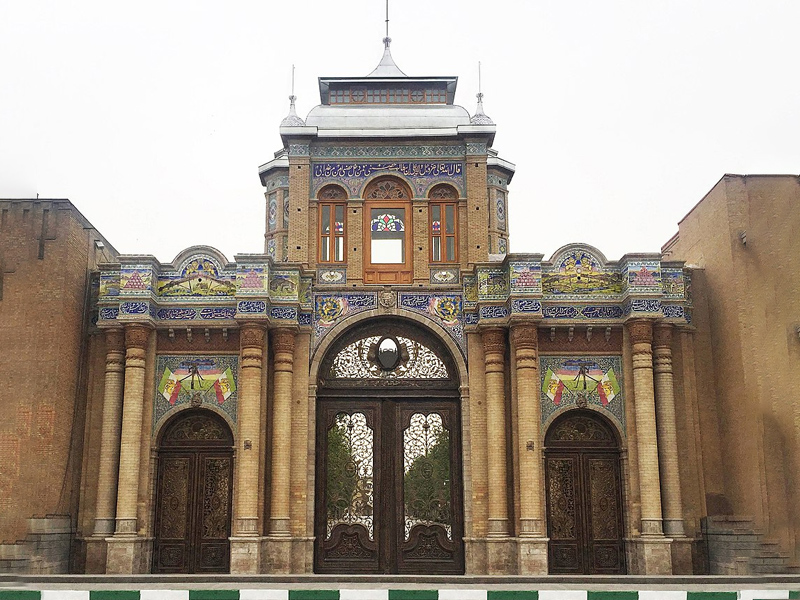The city of Tehran, the bustling and vibrant capital of Iran, has various historical and cultural attractions that may even exceed your imagination. We all know this city as the capital of Iran and the political and economic center of the country. However, it’s worth noting that this city is full of historical and recreational attractions, which have made it one of the most beautiful cities in the world. Among them, the grand entrance of the Tehran National Garden is one of the notable sights of the city. At first glance, when you see the images of this entrance online and compare its dimensions to the human scale, even from a distance, you will be amazed by its magnificence and grandeur.
Book Iran Air flights from London to Tehran and Tehran to London with Eligasht UK:
The grand entrance of the Tehran National Garden and a different view of Tehran
The grand entrance of the National Garden in Tehran is one of the oldest surviving historical remnants of old Tehran. It has remained intact and preserved its antiquity. This entrance has a longer history than the National Garden itself and is one of the magnificent gates that every Iran visitor should see at least once with their own eyes up close. It has unique architecture and features, making it a spectacular structure that carries valuable memories of old Tehran.
Tehran National Garden or Mashq Square Gate
This gate was built to enter Mashq Square during the reign of Fath-Ali Shah Qajar, and it was called “Mashq Square Gate” in the past. Mashq Square is one of the largest and most magnificent squares in Tehran, which was used by the forces and the royal court. After the construction of this gate, the plan to establish the first and largest public garden in the capital called the “National Garden,” was planned on the exact grounds of Mashq Square.
After that, the name of this gate was changed to “Sardar-e Bagh-e Melli” (Grand Entrance of the National Garden). Unfortunately, the Tehran National Garden itself did not last for more than a few years. However, due to the construction of various buildings such as the Museum of Ancient Iran, the National Library, and the Ministry of Foreign Affairs building, this entrance is still referred to as the Grand Entrance of the National Garden. Currently, you won’t see any remnants of Mashq Square in this area, and only the entrance remains from that complex.
Passersby and visitors who pass by this historical and fascinating entrance today are greatly amazed and captivated by its unique and astonishing view. The Grand Entrance of the National Garden in Tehran still shines like an emerald gem on the body of Iran’s capital.
Location of the Grand Entrance of the National Garden
The Grand Entrance of the National Garden Tehran is located on one of the busiest and crowded streets, Imam Khomeini Street. It is a very short distance from Topkhane Square and also adjacent to the west side of the Post Office and the east side of the Ministry of Foreign Affairs. We recommend using the metro to reach this entrance and see it up close.
Simply take Line 1 (Tajrish-Kahrizak) or Line 4 (Farhangsara-e Sadeghieh) and disembark at Imam Khomeini Metro Station. Once you exit the metro station, head west. After walking for approximately 5 minutes, you will be able to see the Grand Entrance of the National Garden from a distance.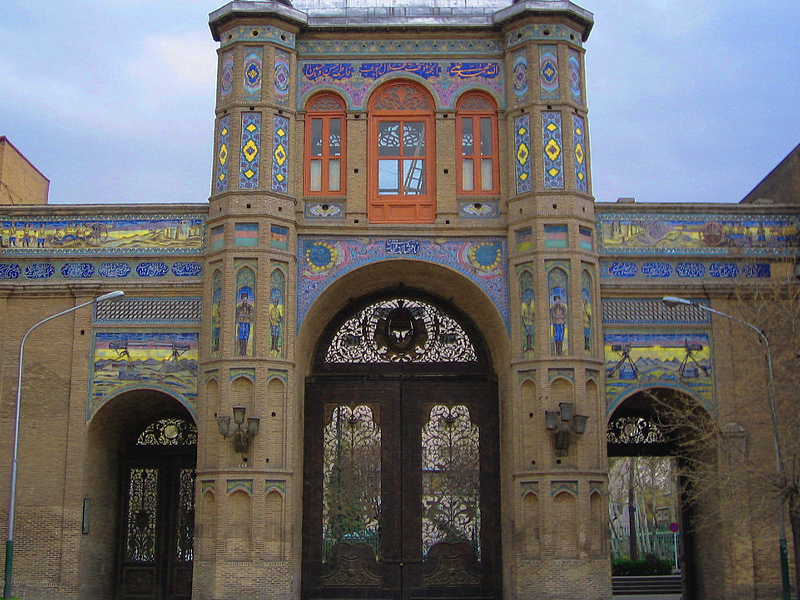
Alternatively, you can also use city buses that depart from Imam Khomeini Square, as well as the Fayaz Bakhsh Terminal or Qorkhaneh Terminal. When you disembark from the bus at these terminals, move northward and head to Imam Khomeini Street. From there, observe the Grand Entrance of the National Garden gracefully along the pedestrian walkway.
A Brief History of the Grand Entrance of the National Garden
As mentioned earlier, Mashq Square was a remnant of the Qajar era, initially serving as a military area. It was a place for military drills and exercises conducted by the Qajar forces, which were established during the reign of Fath-Ali Shah Qajar. The word “Mashq” was derived from the French word “Marche,” meaning drill, which was referred to as “Mashq” in Persian. After the events of the February 1979 revolution, these military forces no longer had a place in the capital, and Tehran was not their headquarters anymore. Therefore, they received training and conducted their exercises outside the city of Tehran. Consequently, Mashq Square no longer had any military purpose and remained completely unused.
At the same time when Reza Shah, who was the Minister of War during the reign of Fath-Ali Shah Qajar, ordered the construction of the main gate of the National Garden in this location. The construction of the beautiful main gate of the Tehran National Garden took place from 1301 to 1304 SH (1922-1925 AD) and was built by Jafar Khan Kashani in collaboration with the Germans before the start of World War II. Other architects were also involved in the construction of this gate, such as Master Ismaili for carpentry, Master Karim Manijeh for column construction, Master Khaknegar Moghadam for tile making, and Master Hussein Kashipaz for tile work and prominent reliefs.
In 1998, on October 4, 1999, this gate was registered as a national monument of Iran with number 2130.
Architecture and Design
The design of the main gate of the Tehran National Garden combines European and Iranian architecture. Especially in the dome and tile work, one can clearly observe this art, which was considered the architecture of that era. The main form of the National Garden gate is designed in a way that represents the beautiful gates of the capital during the reign of Naser al-Din Shah. The materials used in its construction include wood, brick, stone, and iron.
The main structure in front of the National Garden has two inner and outer facades. The inner facade shows images of the profiles of Cyrus the Great, Achaemenid people, and Farah Pahlavi. The outer facade has eight brick columns, which are paired and positioned around multiple triple entrances. These columns, when paired together, are set back by approximately the diameter of a column. This means that in the surrounding area of each of the doors, there are four columns, two of which are in front, and two are placed further back, creating a distinct play of light and shadow.
The width of the National Garden gate is from east to west and is approximately 27 meters, which was considered appropriate for the time since two guard and inspection rooms were embedded in the eastern and western parts. After some time, the room located on the western side was allocated for a joint building of the Iranian and British oil companies. The eastern room was assigned to the Tehran Post Office, which was later demolished.
The columns on the outer facade have a different appearance from the outer view, and one of the designs that can be seen on them is the design of the occupation of Tehran during the coup of 1920. Another notable feature of the National Garden gate is a small room located exactly above the entrance and in the middle, which is built in the form of a Russian-style dome and is heavily influenced by Russian architecture. This room has windows with arched crescents on both sides, opening towards the street and the National Garden and its vaulted roof is considered one of the attractions of this small room.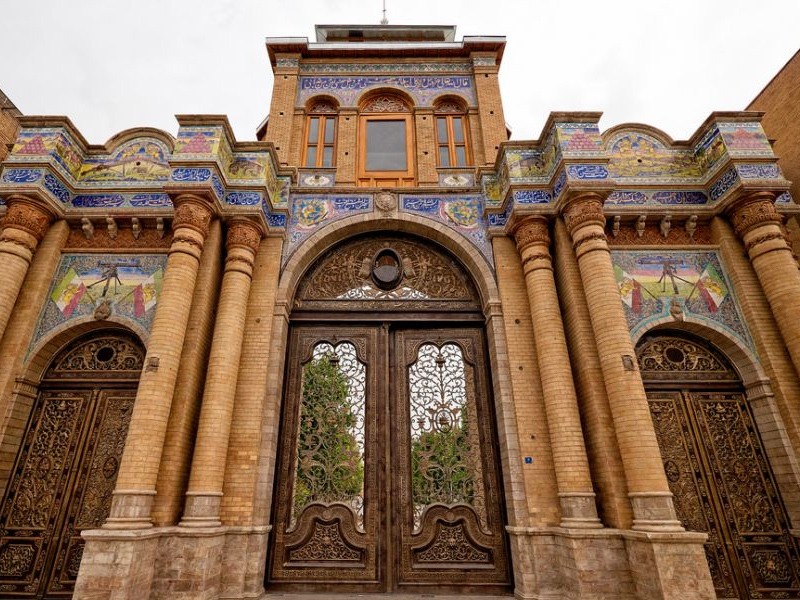
It is worth mentioning that in the past, this small room was originally a signal house, and the people of old Tehran would be informed about the sunrise and sunset by the sound of the bugle playing in this room.
As we mentioned, the main gate of the Tehran National Garden is adorned with colorful tileworks. It’s interesting to know that you can easily see verses by Mohammad Ali Kiyani and Nader Etemad, as well as unique and unparalleled designs such as a crown with two lions, a chain, the sun, a leopard, and a lion on these tiles on the façade of the gate.
In these tile works, elements commemorating the events of the Third of Esfand coup and the occupation of Tehran by Reza Khan can also be observed. Among the remaining designs from the coup, you can see depictions of Reza Shah shooting, and destroying towers and barracks with multiple cannonballs, and a full-length image of the Cossack Legion, which are located on both sides of the main entrance. Additionally, two victory angels can be seen on this gate, and overall, these paintings and beautiful stone carvings evoke the beauty of the Taq-e Bostan reliefs in Kermanshah.
In the upper section of the gate, you can also see various Islamic motifs and different designs. Among them, you can observe a depiction of Reza Shah with a rifle, a battlefield, chains, cannonballs, a leopard, the tricolor flag of Iran, Quranic verses, and verses under the Fringed cap.
Different Gates of the National Garden
The main gate of the National Garden in Tehran, which is considered one of the most beautiful and unique parts of the historical monuments of Tehran and Iran, has two cast iron gates. One of these gates was designed for the passage of horse riders, although it is larger than the other gate. The smaller gate is intended for pedestrian traffic. At present, the part that belonged to the passage of horse riders no longer exists, and you cannot see any trace of the larger gate.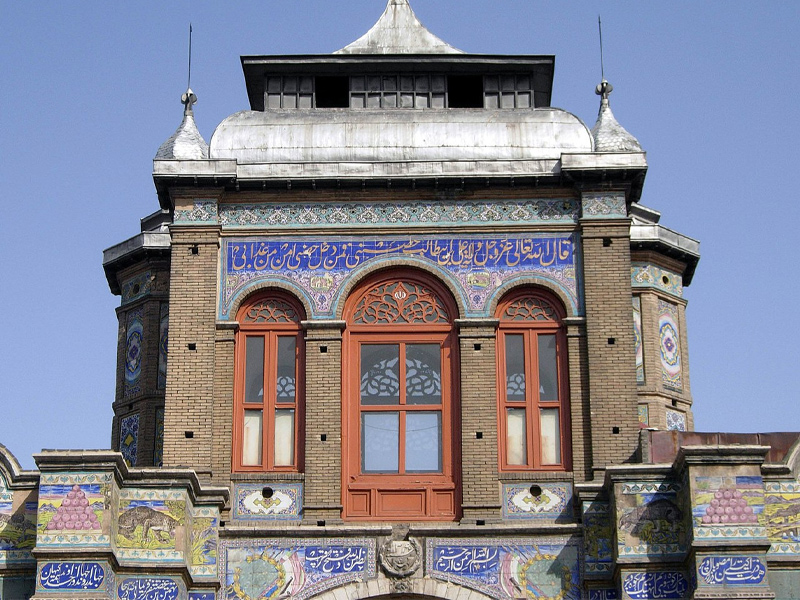
The dark background of the gate in combination with the golden-colored patterns made of brass creates an attractive and eye-catching appearance. The doors for these two gates in the main gate of the National Garden in Tehran were designed and built by Mr. Mohammad Ali Kermani in the workshop. On the inscription placed on these gates, you can easily see the sentence “This work was made in the Tehran workshop” with brass letters and molds, all of which are engraved on the cast iron background.
Close Encounter with the Main Gate of the National Garden
If you have decided to visit the main gate of the National Garden in Tehran after your trip, it’s good to know that this area is usually crowded and experiences heavy traffic, which can be gridlocked at certain times of the day. Therefore, consider the existing traffic in the area and the constant presence of public transportation during peak hours. Additionally, during the day, you can take numerous photos of this gate, which will showcase more details to you. The lighting of the gate during the night is also remarkable and will present another aspect of beauty in the National Garden’s view, particularly at the gate.
Related post
Exploring the Historical Sites in Tehran: A Journey Through Iran’s Capital
Tehran Nightlife| Best Places to Go Out in The Capital
The Main Gate of the National Garden: A Remnant of Beauty for the Future
As you know, Iran is abundant with attractions and beauties that can be seen in all its cities. Perhaps, like some people, you imagine that Tehran, being the capital of Iran, has always been and has no other concept or perception of its existing beauties. However, it’s good to know that by traveling to Tehran, the capital of Iran, you will encounter numerous cultural, historical, natural, and remarkable attractions that will greatly amaze you.
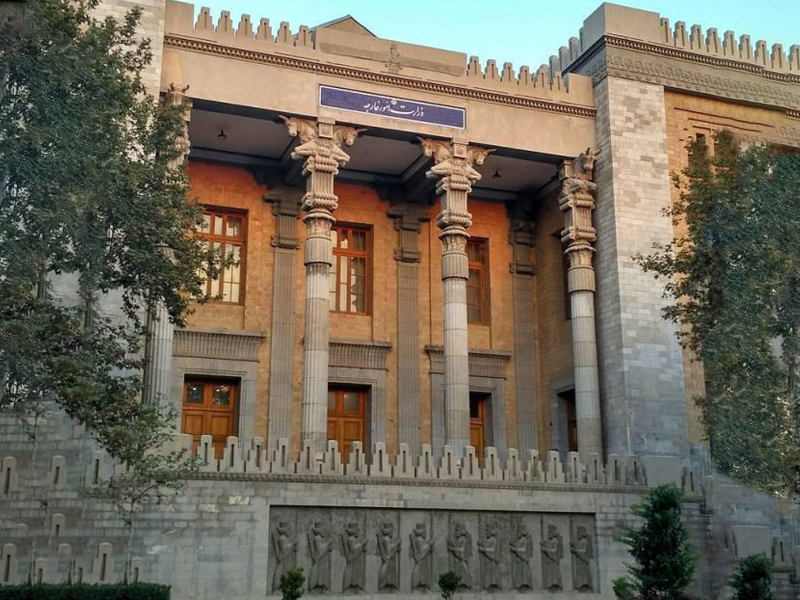
FAQ
1- What are some notable features of the Gate of the National Garden?
The Gate of the National Garden is adorned with colorful tile works, showcasing intricate designs and patterns. It features depictions of historical events, such as the Third of Esfand coup and the occupation of Tehran by Reza Khan. The gate also showcases Islamic motifs and designs.
2- Who created the designs and tile works on the Gate of the National Garden?
The designs and tile works on the Gate of the National Garden were created by artists Mohammad Ali Kiyani and Nader Etemad. They incorporated elements of Iranian art and history into the intricate patterns and depictions on the gate.
3- Are there any symbolic elements on the Gate of the National Garden?
Yes, the Gate of the National Garden features symbolic elements such as a crown with two lions, a chain, the sun, a leopard, and a lion. These elements add to the visual appeal and historical significance of the gate.
